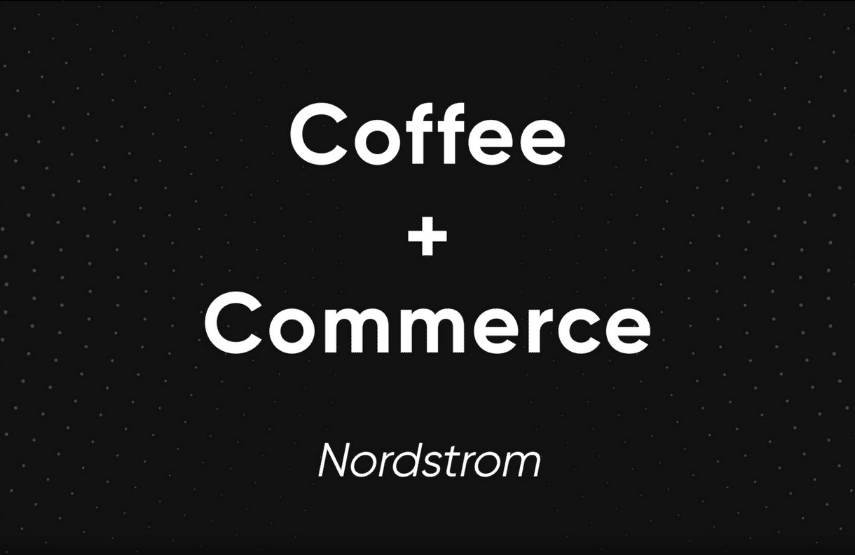Breaking Down Nordstrom’s E-Commerce Site [Video]

In this episode of Coffee + Commerce, we break down Nordstrom’s e-commerce site with Faisal Masud. Faisal is our CEO here at Fabric and was previously the director of AmazonBasics and the CTO at Staples.
According to Digital Commerce 360, Nordstrom’s digital sales decreased 5% to approximately $1.13 billion in the second quarter of 2020. By implementing the changes recommended in this episode, Nordstrom and other online retailers can win more digital sales in 2021 and beyond.
[toc-embed headline=”Key Takeaways”]
Key Takeaways
[0:20]
Don’t make search too dominant.
People prefer to browse more than search when shopping on an e-commerce site. It’s good to have search functionality, but have it embedded in the site experience.
[0:28]
Make category drop-downs transparent.
When you hover over a category in the site navigation (Men), a dropdown with dozens of sub-categories appears. This large dropdown box hides the shopping experience on the main screen.
[0:51]
Use IP addresses to surface the closest stores for pick-up.
Nordstrom auto-detects your zip code based on your IP address. It uses this information to promote same-day pickup at the closest stores. The experience is frictionless.
[1:08]
Hide options in filter with unavailable products.
When you click the Brands filter in the sidebar, the majority of brands don’t offer men’s hoodies, yet these brands are still surfaced. Instead, brands (i.e. filter options) without relevant products should disappear to streamline the shopping experience.
[1:40]
Add height and weight of models for sizing reference.
There is no description about the size of the model who is wearing the clothes. Brands like Buck Mason offer these descriptions, which help shoppers understand how different clothing fits.
[2:07]
Recommend products further down the funnel (with click-to-add functionality).
Other products are recommended on product detail pages, but if someone wants to add the main product and the recommended product—at the same time—the experience does not support this. Another option is to recommend additional products during checkout so shoppers can quickly add recommended products to their cart in one click.
[3:44]
Use smart search functionality.
When searching for Goodlife hoodies, the term “hoodie good life” is entered but no Goodlife hoodies appear. Nordstrom’s search functionality requires you to enter the exact brand name to see relevant products. (You must enter “goodlife” without the space.)
[4:43]
Use a personalization engine.
A men’s hoodie is added to the cart, but when a search is performed for “black shorts” only women’s shorts are surfaced. A personalization engine can be used to surface products in search results that are more relevant to items previously clicked and added.
[5:53]
Don’t disrupt the shopping experience with feedback forms.
Before anything is purchased, a feedback popup is triggered that disrupts the shopping experience. This popup and feedback functionality is provided by Foresee and primarily operates as an obstruction in the customer journey.
[7:01]
Make curbside pickup easy.
Nordstrom promotes curbside pickup by offering a $10 promo but does not make the “Buy and Pick Up” option easy to select. Nor does it make shoppers confident that they will receive the $10 promo that was promised.
[7:50]
Support hybrid carts.
When the cart is holding one item for pickup and one item for shipping, Nordstrom’s “Shopping Bag” page becomes confusing. For instance, socks that were selected for pickup have a Delivery option beneath them.
To make changes based on these recommendations and upgrade your e-commerce site, a headless commerce setup is vital. This makes it easy to add new e-commerce functionality and features while maintaining full control over site experience. To learn more about this modern approach to e-commerce, check out Fabric.

Content marketer @ fabric. Previously marketing @ KHON-TV and Paramount Pictures.